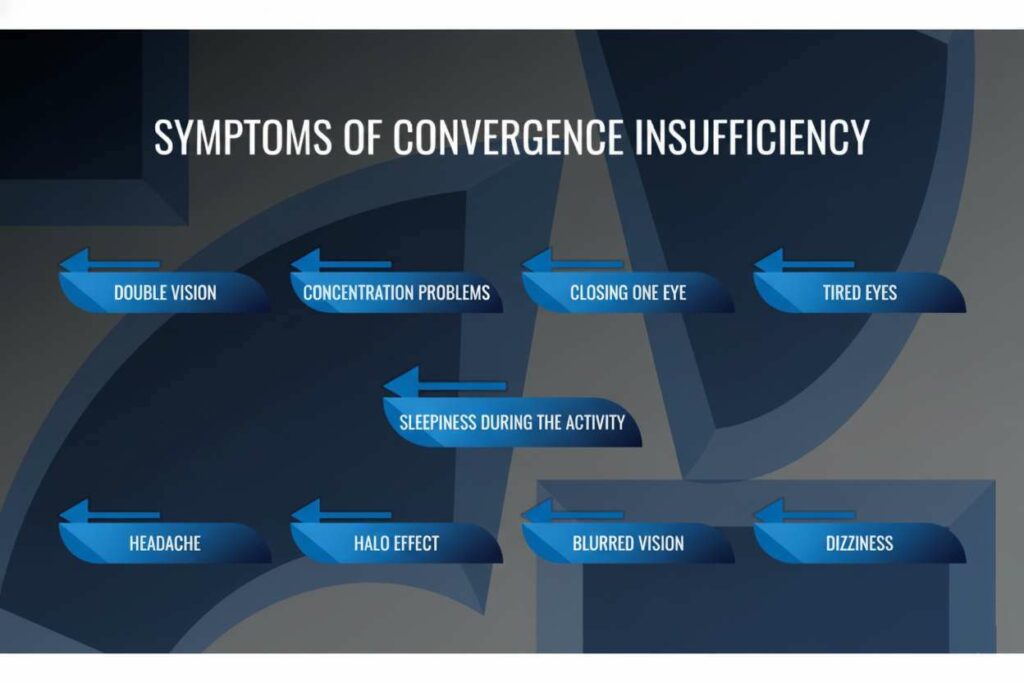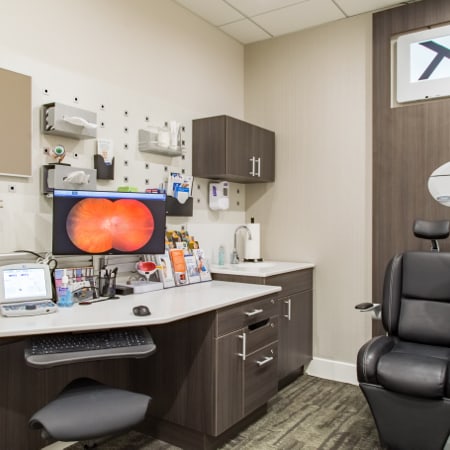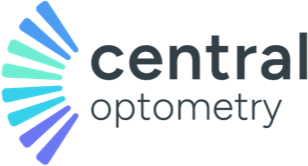You might assume your headaches are caused by stress or that your neck pain comes from poor posture. However, these symptoms often point to something many people overlook—eye misalignment. At Central Optometry in London, our team understands how closely your vision and overall comfort are connected. Through comprehensive eye exams, we can identify subtle alignment issues and create treatment plans to help reduce daily discomfort.
Eye misalignment occurs when your eyes can’t work together properly, causing strain on your visual system and triggering discomfort throughout your head, neck, and shoulders. This condition affects how your brain processes visual information and can make everyday tasks feel exhausting.
Common Signs Your Eyes Aren’t Working Together
Eye misalignment symptoms often develop gradually, making them easy to overlook or blame on other causes. Your body works hard to compensate for misaligned eyes, which creates strain in unexpected places. Understanding these symptoms is crucial, as strabismus (crossed eyes) and other alignment issues can significantly impact quality of life.
- Double vision
- Frequent headaches
- Eye strain & fatigue
- Tilting or turning your head to see clearly
- Difficulty reading or focusing on close work
- Closing one eye when looking at objects
- Neck & shoulder tension
When Eye Misalignment Appears Suddenly
Sudden eye misalignment in adults typically signals a medical emergency and needs immediate attention. This can happen after a stroke, head injury, or other neurological event.
Gradual development is more common and often goes unnoticed for years. Your visual system adapts slowly, masking the problem until the strain becomes too much to manage.
The Main Causes Behind Eye Misalignment
Eye misalignment develops from various factors that affect how your eye muscles coordinate. These causes range from developmental issues present at birth to acquired conditions that develop over time. Vision therapy can help address many of these underlying coordination problems.
Problems with Eye Muscle Control
Your brain controls six muscles around each eye to coordinate their movement. When the signals between your brain and eye muscles become disrupted, your eyes can’t maintain proper alignment.
This coordination problem can stem from developmental differences or damage to the nerves that control eye movement. The result is eyes that drift apart or don’t track together smoothly.
Medical Conditions That Affect Eye Alignment
Several health conditions can disrupt the delicate balance needed for proper eye alignment:
- Diabetes complications
- Thyroid eye disease (Graves’ disease)
- Stroke
- Head injuries
- Brain tumors
- Myasthenia gravis
Vision Problems That Lead to Misalignment
When one eye doesn’t see as clearly as the other, your brain may begin to favour the stronger eye and suppress input from the weaker one. Over time, this imbalance can disrupt how both eyes work together, leading to eye misalignment and symptoms like headaches or blurred vision.
Common visual conditions that can contribute to misalignment include:
- Uncorrected refractive errors: Even small prescriptions for nearsightedness, farsightedness, or astigmatism can cause uneven focusing demands between your eyes.
- A difference in vision between the eyes: When one eye consistently provides clearer input, your brain may suppress the other, disrupting coordination.
- Eye muscle coordination issues: Problems with how your eye muscles work together can cause subtle misalignment, especially during long periods of focus or screen use.
Addressing these issues early through a comprehensive eye exam helps maintain binocular vision and prevent the discomfort associated with eye misalignment.

How Digital Screens & Modern Life Contribute to Eye Problems
Your eyes work harder than ever before due to increased screen time and close-up tasks. This constant demand on your visual system can reveal or worsen existing alignment issues. The 20-20-20 rule can help reduce some of this strain during extended screen use.
Digital Eye Strain & Convergence Issues
When you focus on screens or read, your eyes must converge (turn inward) and maintain that position for extended periods. If your eyes don’t coordinate well naturally, this sustained convergence becomes exhausting.
Many people develop convergence insufficiency, where their eyes struggle to maintain proper alignment during close work. This condition often goes undiagnosed but causes significant discomfort related to digital eye strain.
Posture Problems That Affect Your Eyes
Poor posture while using devices forces your eyes to work at awkward angles. When your head tilts forward or to one side, your eyes must compensate to maintain focus.
This compensation puts additional strain on your eye muscles and can worsen existing alignment problems. The connection between posture and eye strain creates a cycle of discomfort.
The Connection Between Eye Misalignment & Trigeminal Nerve Issues
The trigeminal nerve carries sensation from your face, jaw, and eye area to your brain. When your eyes are misaligned, the extra effort required to maintain clear vision can overstimulate this nerve system. Advanced solutions like Neurolens technology address these complex relationships between eye alignment and nerve-related symptoms.
When your eyes aren’t perfectly aligned, they work harder to stay focused together. Over time, this constant effort can irritate a key nerve in your head called the trigeminal nerve. That irritation—known as trigeminal dysphoria—can cause more than just tired eyes. You might also notice tension headaches, pressure around your eyes, jaw discomfort, or even sensitivity to light and motion.
Because these symptoms don’t always feel like “eye problems,” they can be easy to overlook. Neurolens helps correct subtle eye misalignment by gently aligning your vision and easing the strain on your visual system, helping you feel more comfortable throughout the day.
Signs Your Eye Problems May Be Nerve-Related
Nerve-related symptoms from eye misalignment often affect areas you wouldn’t expect:
- Facial discomfort or pressure
- Jaw tension
- Light sensitivity
- Motion sickness
If you experience any of these symptoms regularly, especially alongside headaches or eye strain, it may be time to schedule a comprehensive eye exam. Our team at Central Optometry can assess whether subtle eye misalignment or nerve irritation could be contributing to how you feel.
When to Seek Professional Help for Eye Misalignment
Many people live with eye misalignment symptoms for years without realizing the cause. Recognizing when your symptoms need professional attention can help you find relief and prevent complications. Comprehensive eye exams are essential for proper diagnosis and treatment planning.
Self-Assessment Questions to Consider
Ask yourself these questions to determine if you might have eye misalignment issues:
- Do you experience frequent headaches, especially after reading or computer work?
- Do you close one eye or tilt your head to see more clearly?
- Do you feel eye strain or fatigue by mid-day?
- Do you have neck or shoulder tension that worsens with visual tasks?
- Do you avoid reading or detailed work because it’s uncomfortable?
What Comprehensive Binocular Vision Testing Reveals
Specialized binocular vision testing goes far beyond regular eye exams to measure how well your eyes work together. These tests can detect subtle misalignment issues that standard vision screenings miss.
The testing evaluates eye muscle balance, convergence ability, and how your visual system responds to different demands. This comprehensive assessment helps identify the root cause of your symptoms.
Treatment Options Available in London, ON
Modern treatments for eye misalignment include prismatic lenses, vision therapy, and innovative solutions like Neurolens technology. These approaches can help reduce strain and improve comfort during daily activities.Central Optometry offers comprehensive binocular vision testing and advanced treatment options for London, Ontario patients dealing with eye misalignment issues.
If you’re experiencing symptoms that might be related to eye alignment problems, schedule a consultation to explore how specialized care can help improve your comfort and visual function.
















